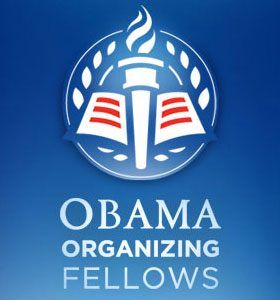Saturday, February 8, 2014
Sojourner Truth
Alfre Woodard reads Sojourner Truth
Sojourner Truth (1797-1883): Ain't I A Woman?
Delivered 1851
Women's Convention, Akron, Ohio
Well, children, where there is so much racket there must be something out of kilter. I think
that 'twixt the negroes of the South and the women at the North, all talking about rights, the
white men will be in a fix pretty soon. But what's all this here talking about?
That man over there says that women need to be helped into carriages, and lifted over
ditches, and to have the best place everywhere. Nobody ever helps me into carriages, or over
mud-puddles, or gives me any best place! And ain't I a woman? Look at me! Look at my arm!
I have ploughed and planted, and gathered into barns, and no man could head me! And ain't
I a woman? I could work as much and eat as much as a man - when I could get it - and bear
the lash as well! And ain't I a woman? I have borne thirteen children, and seen most all sold
off to slavery, and when I cried out with my mother's grief, none but Jesus heard me! And
ain't I a woman?
Then they talk about this thing in the head; what's this they call it? [member of audience
whispers, "intellect"] That's it, honey. What's that got to do with women's rights or negroes'
rights? If my cup won't hold but a pint, and yours holds a quart, wouldn't you be mean not to
let me have my little half measure full?
Then that little man in black there, he says women can't have as much rights as men, 'cause
Christ wasn't a woman! Where did your Christ come from? Where did your Christ come
from? From God and a woman! Man had nothing to do with Him.
If the first woman God ever made was strong enough to turn the world upside down all
alone, these women together ought to be able to turn it back , and get it right side up again!
And now they is asking to do it, the men better let them.
Obliged to you for hearing me, and now old Sojourner ain't got nothing more to say.
Born in New York circa 1797, Sojourner Truth was the self-given name, from 1843 onward, of Isabella Baumfree, an African-American abolitionist and women's rights activist. Truth was born into slavery in Swartekill, New York, but escaped with her infant daughter to freedom in 1826. Her best-known speech on racial inequalities, "Ain't I a Woman?", was delivered extemporaneously in 1851 at the Ohio Women's Rights Convention.
Born Isabella Baumfree circa 1797, Sojourner Truth was one of as many as 12 children born to James and Elizabeth Baumfree in the town of Swartekill, in Ulster County, New York. Truth's date of birth was not recorded, as was typical of children born into slavery. Historians estimate that she was likely born around 1787. Her father, James Baumfree, was a slave captured in modern-day Ghana; Elizabeth Baumfree, also known as Mau-Mau Bet, was the daughter of slaves from Guinea. The Baumfree family was owned by Colonel Hardenbergh, and lived at the colonel's estate in Esopus, New York, 95 miles north of New York City. The area had once been under Dutch control, and both the Baumfrees and the Hardenbaughs spoke Dutch in their daily lives.
After the colonel's death, ownership of the Baumfrees passed to his son, Charles. The Baumfrees were separated after the death of Charles Hardenbergh in 1806. The 9-year-old Truth, known as "Belle" at the time, was sold at an auction with a flock of sheep for $100. Her new owner was a man named John Neely, whom Truth remembered as harsh and violent. She would be sold twice more over the following two years, finally coming to reside on the property of John Dumont at West Park, New York. It was during these years that Truth learned to speak English for the first time.
Around 1815, Truth fell in love with a slave named Robert from a neighboring farm. The two had a daughter, Diana. Robert's owner forbade the relationship, since Diana and any subsequent children produced by the union would be the property of John Dumont rather than himself. Robert and Sojourner Truth never saw each other again. In 1817, Dumont compelled Truth to marry an older slave named Thomas. Their marriage produced a son, Peter, and two daughters, Elizabeth and Sophia.
The state of New York, which had begun to negotiate the abolition of slavery in 1799, emancipated all slaves on July 4, 1827. The shift did not come soon enough for Truth. After John Dumont reneged on a promise to emancipate Truth in late 1826, she escaped to freedom with her infant daughter, Sophia. Her other daughter and son stayed behind. Shortly after her escape, Truth learned that her son Peter, then 5 years old, had been illegally sold to a man in Alabama. She took the issue to court and eventually secured Peter's return from the South. The case was one of the first in which a black woman successfully challenged a white man in a United States court.
After her successful rescue of her son, Peter, from slavery in Alabama, the boy stayed with his mother until 1839. At that time, Peter took a job on a whaling ship called the Zone of Nantucket. Truth received three letters from her son between 1840 and 1841. When the ship returned to port in 1842, however, Peter was not on board. Truth never heard from him again.
On June 1, 1843, Isabella Baumfree changed her name to Sojourner Truth, devoting her life to Methodism and the abolition of slavery. In 1844, she joined the Northampton Association of Education and Industry in Northampton, Massachusetts. Founded by abolitionists, the organization supported a broad reform agenda including women's rights and pacifism. Members lived together on 500 acres as a self-sufficient community. Truth met a number of leading abolitionists at Northampton, including William Lloyd Garrison, Frederick Douglass and David Ruggles.
Although the Northampton community disbanded in 1846, Sojourner Truth's career as an activist and reformer was just beginning. William Lloyd Garrison published her memoirs in 1850 under the title The Narrative of Sojourner Truth: A Northern Slave. Truth dictated her recollections to a friend, since she could not read or write. That same year, Truth spoke at the first National Women's Rights Convention in Worcester, Massachusetts. She soon began touring regularly with abolitionist George Thompson, speaking to large crowds on the subjects of slavery and human rights. She was one of several escaped slaves, along with Frederick Douglass and Harriet Tubman, to rise to prominence as an abolitionist leader and a testament to the humanity of enslaved people.
In May of 1851, Truth delivered a speech at the Ohio Women's Rights Convention in Akron. The extemporaneous speech, recorded by several observers, would come to be known as "Ain't I a Woman?" The first version of the speech, published a month later by Ohio Anti-Slavery Bugle editor Marius Robinson, did not include the question "Ain't I a woman?" even once. Robinson had attended the convention and recorded Truth's words himself. The famous phrase would appear in print 12 years later, as the refrain of a Southern-tinged version of the speech. It is unlikely that Sojourner Truth, a native of New York whose first language was Dutch, would have spoken in this Southern idiom.
Truth continued to tour Ohio from 1851 to 1853, working closely with Marius Robinson to publicize the antislavery movement in the state. As Truth's reputation grew and the abolition movement gained momentum, she drew increasingly larger and more hospitable audiences. Even in abolitionist circles, some of Truth's opinions were considered radical. She sought political equality for all women, and chastised the abolitionist community for failing to seek civil rights for black women as well as men. She openly expressed concern that the movement would fizzle after achieving victories for black men, leaving both white and black women without suffrage and other key political rights.
Sojourner Truth put her reputation to work during the Civil War, helping to recruit black troops for the Union Army. She encouraged her grandson, James Caldwell, to enlist in the 54th Massachusetts Regiment. In 1864, Truth was called to Washington, D.C., to contribute to the National Freedman's Relief Association. On at least one occasion, Truth met and spoke with President Abraham Lincoln about her beliefs and her experience.
True to her broad reform ideals, Truth continued to agitate for change even after Lincoln's Emancipation Proclamation. In 1865, Truth attempted to force the desegregation of streetcars in Washington by riding in cars designated for whites. A major project of her later life was the movement to secure land grants from the federal government for former slaves. She argued that ownership of private property, and particularly land, would give African Americans self-sufficiency and free them from a kind of indentured servitude to wealthy landowners. Although Truth pursued this goal forcefully for many years, she was unable to sway Congress.
Sojourner Truth died at her home in Battle Creek, Michigan, on November 26, 1883. She is buried alongside her family at Battle Creek's Oak Hill Cemetery. Until old age intervened, Truth continued to speak passionately on the subjects of women's rights, universal suffrage and prison reform. She was also an outspoken opponent of capital punishment, testifying before the Michigan state legislature against the practice. She also championed prison reform in Michigan and across the country. While always controversial, Truth was embraced by a community of reformers including Amy Post, Wendell Phillips, William Lloyd Garrison, Lucretia Mott and Susan B. Anthony—friends with whom she collaborated until the end of her life.
Truth is remembered as one of the foremost leaders of the abolition movement and an early advocate of women's rights. Although she began her career as an abolitionist, the reform causes she sponsored were broad and varied, including prison reform, property rights and universal suffrage. Abolition was one of the few causes that Truth was able to see realized in her lifetime. Her fear that abolitionism would falter before achieving equality for women proved prophetic.
The Constitutional Amendment barring suffrage discrimination based on sex was not ratified until 1920, nearly four decades after Sojourner Truth's death.
Sojourner Truth Bust Unveiling
Sojourner Truth - Mini Biography
Subscribe to:
Posts (Atom)
.jpg)










































